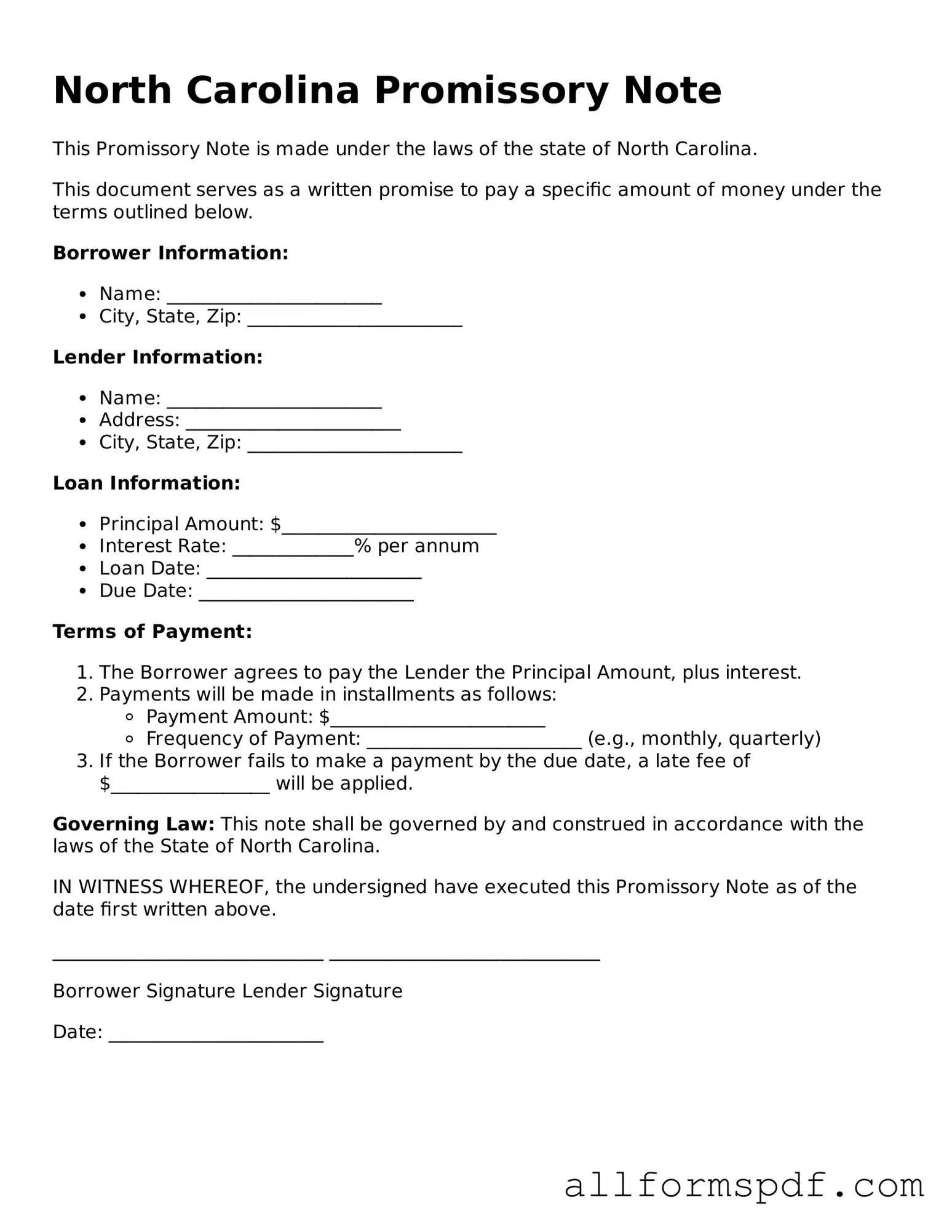Filling out a North Carolina Promissory Note form can seem straightforward, but several common mistakes can lead to complications down the line. One frequent error is failing to include all necessary details about the borrower and lender. The names, addresses, and contact information of both parties must be clearly stated. Omitting even one piece of this information can create confusion and make it difficult to enforce the note if issues arise.
Another mistake often made is neglecting to specify the loan amount clearly. While it may seem obvious, writing the amount in both numerical and written form is crucial. For example, stating “$5,000” and “five thousand dollars” helps prevent disputes about the actual loan amount. If only one format is used, it could lead to misunderstandings that complicate repayment.
People also frequently overlook the importance of including the interest rate. If the note is intended to bear interest, this must be explicitly stated. Without a clear interest rate, the note may be considered invalid under North Carolina law. Additionally, the terms of repayment should be detailed. This includes the payment schedule, whether payments are monthly, quarterly, or otherwise, and the due date for the final payment.
Lastly, many individuals forget to sign and date the Promissory Note. A signature is essential for the document to be legally binding. Both the borrower and lender should sign the note, and it is advisable to have a witness or notary present during the signing. This adds an extra layer of validity and can be beneficial if the agreement is ever challenged in court.
